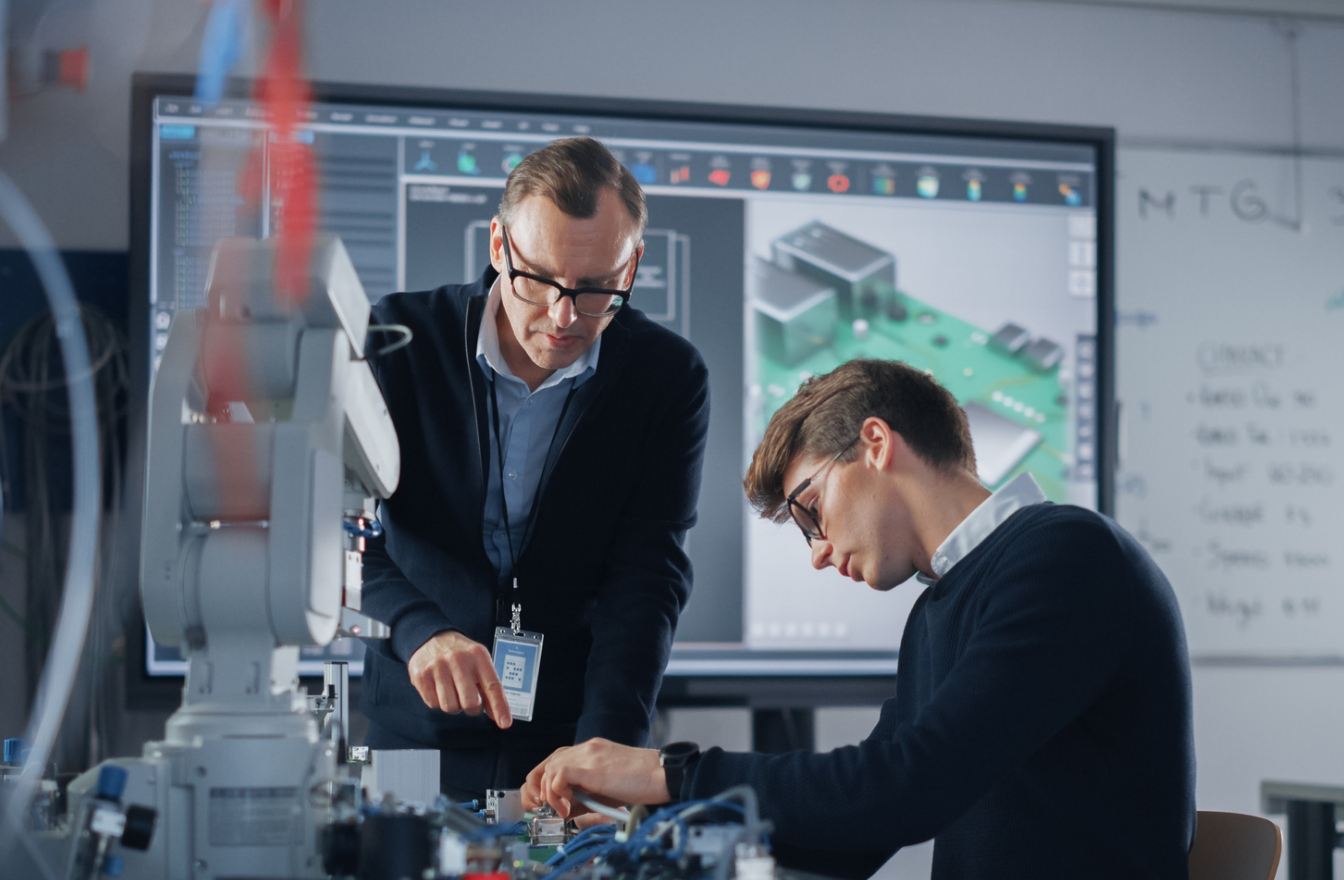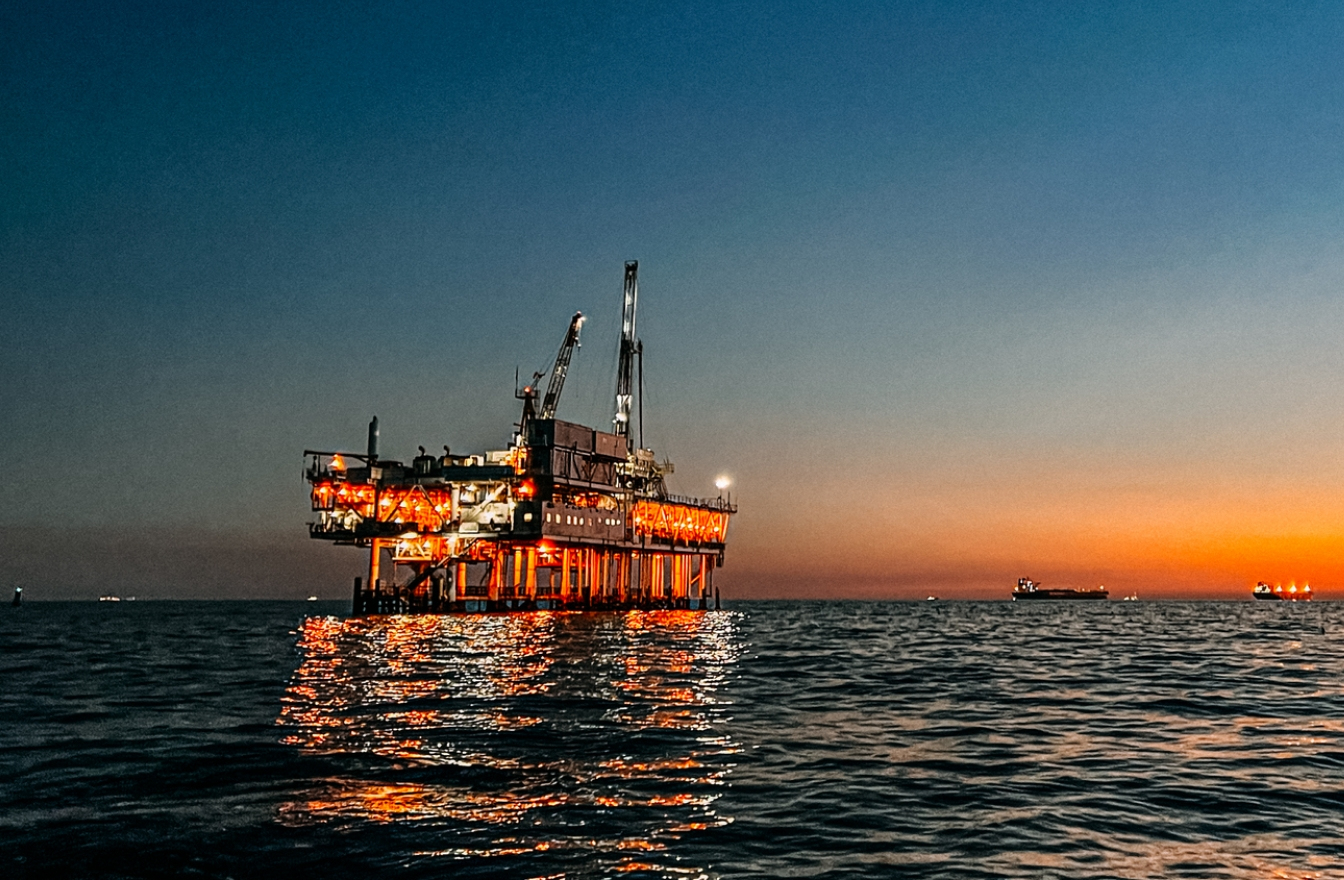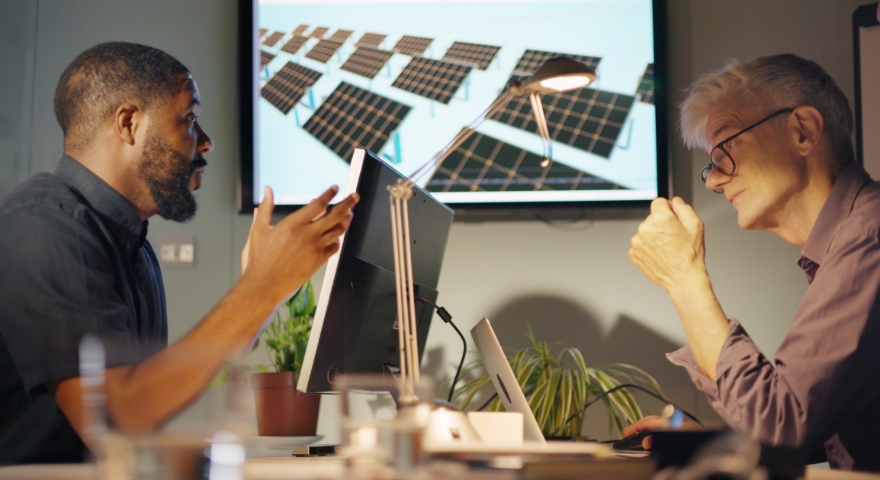
Connect every project phase with FieldTwin
Build a digital thread, from appraisal to decommissioning, that keeps your data flowing through decades of field life
Lifecycle fragmentation challenges
Energy companies face significant challenges maintaining continuity across the full lifecycle of offshore projects. From appraisal through decommissioning, critical data and context are frequently lost during phase transitions, partner changes, and system migrations. Traditional approaches create siloed information, knowledge gaps, and inefficient handovers that increase costs, extend timelines, and impact long-term operational performance.
Focused on lifecycle continuity
FieldTwin provides a central platform that maintains a digital thread throughout your field's entire lifecycle. With consistent data structures, flexible integration capabilities, and powerful visualization, FieldTwin ensures critical information flows between phases, partners, and applications - from the earliest concept selection through decades of operations and eventual decommissioning.
Following the field lifecycle journey
Picture an energy company developing a new offshore field from initial well discovery through its entire lifecycle.
FieldTwin creates a consistent digital foundation that evolves throughout the field lifecycle, maintaining critical information and context across decades of development and operations while providing access to holistic project information from operators and EPCs throughout the lifecycle.
Here's how FieldTwin creates continuity across each phase:
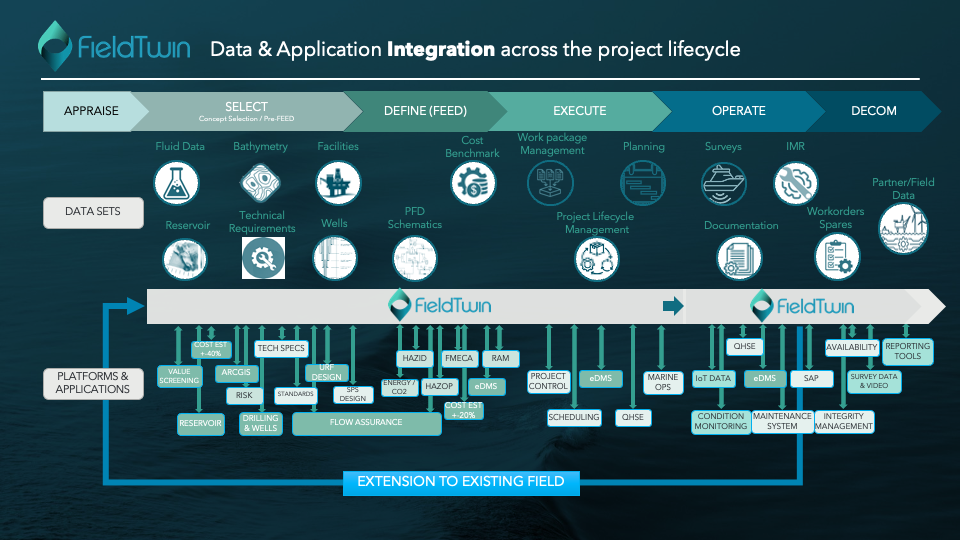
-
Appraise and select phase
During early concept selection and preliminary front-end engineering design (pre-FEED), the operator imports initial bathymetry, reservoir data, and fluid characteristics into FieldTwin. Engineers explore multiple development concepts, testing different configurations and running early cost estimates with ±40% accuracy. Partners and regulators access shared visualizations to provide early input, while integrations with value screening tools and GIS systems pull in additional contextual data. This results in the digital design foundation for all future development.
-
Define phase (FEED)
As the project moves into FEED, the detailed design begins within the same FieldTwin environment. The digital twin grows in complexity, incorporating technical requirements, process flow diagrams (PFDs), and schematics. Engineering contractors access the platform through FieldTwin Collaborate, developing subsea and topside designs with continuously improving cost estimates. Integrations with HAZID, HAZOP, and flow assurance tools enrich the model with risk assessments and technical validation, all remaining connected to the original foundational design.
-
Execute phase
During execution, selected contractors work within the established digital twin, adding construction and installation details. Planning surveys, work package management, and project control systems integrate with FieldTwin, maintaining consistency between design intent and actual installation. Contractors access relevant sections of the model, ensuring accurate implementation of the design while adding as-built details back to the digital twin.
-
Operate phase
When operations begin, the digital twin transitions from design to operational support. Survey data, maintenance records, and condition monitoring information integrate seamlessly into the model. Operations teams use the visual environment to plan interventions, conduct training, and optimize performance. The platform maintains connections with integrity management systems, production reporting, and maintenance workflows, providing context that would not be available in standalone systems.
-
Decommissioning phase
Decades later, when decommissioning planning begins, the complete history of the field exists within the digital twin. New partners and contractors gain immediate understanding of the infrastructure, including modifications made over the years and abandonment requirements. The platform provides continuity that would otherwise be lost through multiple generations of workers and changing regulatory requirements.
Knowledge retention
Preserve critical design decisions, operational history, and contextual information across decades of field life and multiple workforce generations.
Smoother transitions
Eliminate costly, time-consuming handovers between project phases with a digital environment that evolves naturally with your project.
Better decisions
Make more informed choices at every stage by maintaining access to complete historical context and cross-functional information.
Future-ready operations
Prepare for later lifecycle challenges from day one by establishing a comprehensive digital foundation that supports the entire field journey.
Trusted by teams at leading energy companies








Ready to connect your entire project lifecycle?
Explore more about FieldTwin Collaborate
Rewrite how engineering gets done
Get in touch to discover how FieldTwin can optimize your project performance.

